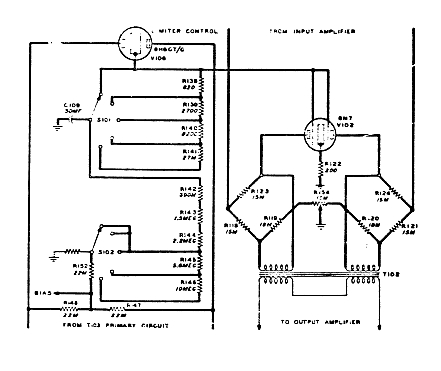As an outgrowth of the magnetoresitive patent thread and the post by emrr citing the Collins 26W as an example of a bridge circuit limiter I've become intrigued by this architecture. I tried to model the idea a little bit in LTSpice and Tina, but I wasn't getting too far.
How does it sound? It seems like the 26W could be given a variable ratio, though it might be more of a problem than I foresee. Happens to use one of my favorite tubes too, the venerable 6N7. Transformers could be a problem of course.

Manual found herehttp://www.collinsradio.org/html/manuals.html
Michael
How does it sound? It seems like the 26W could be given a variable ratio, though it might be more of a problem than I foresee. Happens to use one of my favorite tubes too, the venerable 6N7. Transformers could be a problem of course.

Manual found herehttp://www.collinsradio.org/html/manuals.html
Michael


